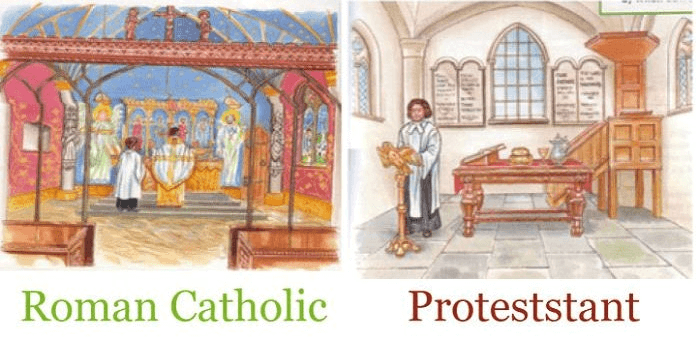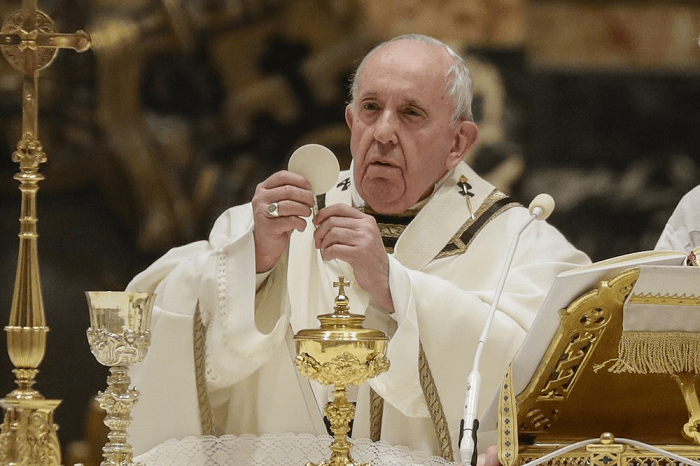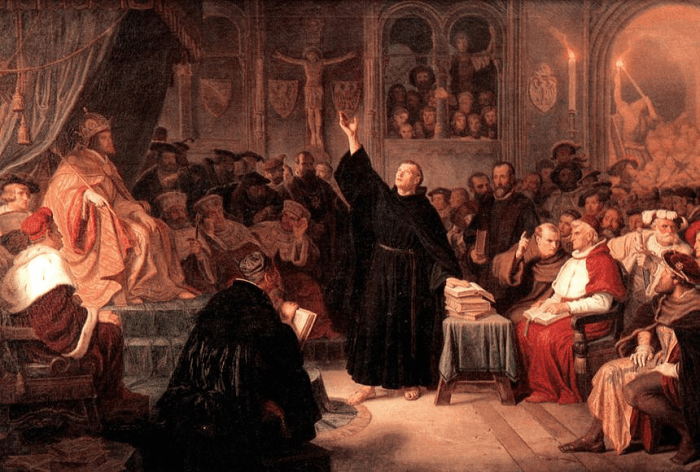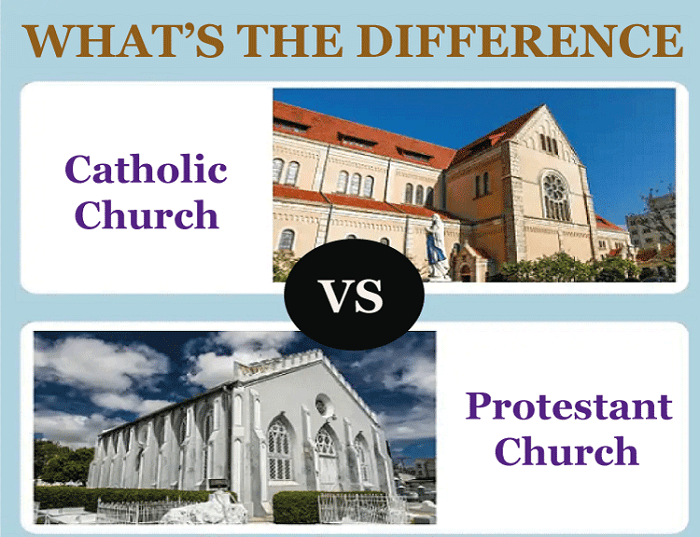Difference between Catholic and ProtestantIntroduction
Similar to how Shia and Sunni are two divisions of Islam, Protestantism, and Catholicism are two different forms of Christianity. Protestantism is a broad word for Christianity that is not governed by the pope, while the pope is the leader of the Catholic Church. While they both serve the same God, especially on Christmas, their religious beliefs are not the same. This is a description of the distinctions between Protestant and Catholic Christianity in terms of religion. These two systems of thought are often distinguished from one another in opposition to one another, but typically without providing any justification for why they vary. Catholicism is rooted in history, form, and ritual since it was established when Rome declared Christianity to be its official religion. The foundation of Protestantism is the Martin Luther-inspired Reformation, which accepted certain tenets of Catholicism while vehemently rejecting many others. The debate over the sufficiency and authority of Scripture is one of the earliest and most significant disputes between Catholicism and Protestantism. Protestants believe that only the Bible is the origin of God's unique communication to humanity and that it contains all of the information required for our redemption from sin. Protestants believe that the Bible should serve as the yardstick by which all Christian conduct is evaluated. Among the "five solas" (sola is Latin for "alone") that emerged from the Protestant Reformation is this viewpoint, known as "sola scriptura." The Bible has several passages that assert its authority and assert that it is adequate for all concerns of faith and practice. One of the most explicit statements about the inspiration of Scripture is found in 2 Timothy 3:16, which states that "all Scripture is given by inspiration of God and is reliable for education, for reproof, for modification, and for training in righteousness; that the man of God may be complete, furnished for every good work." Catholics disagree with the idea that the Bible alone is adequate and reject the sola scriptura concept. They argue that a Christian is equally bound by the holy Roman Catholic heritage and the Bible. Several Roman Catholic ideas, such as purgatory, praying to the saints, honoring or worshipping Mary, etc., are purely founded on Roman Catholic practices and have little to no validity in the Bible. The adequacy, power, and fullness of the Bible are undermined by the Roman Catholic Church's assertion that culture and the Bible are equally authoritative. The basis of most, if not all, of the disagreements between Catholics and Protestants, is how they interpret the Bible. What is Catholic?
Roman Catholicism, a branch of Christianity, has shaped Western civilization's religious landscape. It is among the three main streams of Christianity, along with Protestantism and Eastern Orthodoxy. Jesus Christ and the Apostles are the founding figures of the Roman Catholic Church. The pope, the longest surviving absolute monarchy in the world, is at the top of an extensive organizational system that has evolved over time. Roman Catholics make up a larger portion of the global population (almost 1.1 billion) than almost any other kind of religion. The number of Roman Catholics is higher than that of the particular traditions of Shi'a and Sunni Islam, despite the fact that there are more Roman Catholics than Muslims. Irrespective of the way an individual chooses to respond to the fundamental concerns of life, death, and spirituality, these indisputable statistical and historical facts imply that some knowledge of Roman Catholicism?its history, its organizational framework, its religious practices, and its place in the world?is a necessary element of cultural literacy. Without a clear understanding of what Roman Catholicism is, it is difficult to understand the history of the Medieval Era, the ideas of St. Thomas Aquinas, Dante's Divine Comedy, the art of Gothic cathedrals, or the music of numerous Haydn and Mozart masterpieces.Roman Catholicism may be explained and understood using a number of different viewpoints and approaches. Consequently, the Roman Catholic Church is a complicated structure that is severely summarised by the typical depiction of a pyramid, with the pope at the tip and the faithful seated at the base. Furthermore, within that entity, sacred congregations, archdioceses and dioceses, territories, religious orders and communities, seminaries and universities, churches and brotherhoods, and countless other groups all encourage the social scientist to take into account power dynamics, leadership roles, social dynamics, and other sociological occurrences that they specifically represent. Roman Catholicism is a global religion among world religions, including aspects of numerous other world religions within the scope of its multifaceted existence; hence, only the comparative approach to religion can handle them all. Additionally, Roman Catholic theology must be understood rationally in order to comprehend its theological terminology due to the impact of Plato and Aristotle on those who formed it. What is Protestant?
A follower of any one of the Christian organizations that broke away from the Church of Rome during the Reformation, or of any group that is related to them, is referred to as a "Protestant." Outside of German politics, the word "protestant" was virtually always employed throughout the Reformation. While originally just having a political connotation, the word "protestant" subsequently came to apply to any follower of a Western church who adhered to the major Protestant beliefs. As part of the movement, many Protestantism scholars have attempted to define what constitutes a Christian denomination. They all agree that in order for a Christian denomination to qualify as Protestant, it must uphold the following three essential Protestant beliefs:
The Protestant Reformation was a movement that started in the 16th century and sought to restructure the Catholic Church from within in response to what its supporters saw as failures, abuses, and differences within it. Protestantism is a branch of Christianity that adheres to the movement's theological principles. Protestantism emphasizes the Christian believer's justification by God through faith alone (sola fide) as opposed to a combination of belief and good works as in Catholicism; the principle that eternal life comes by divine grace or "unmerited favor" only (sola gratia); the priesthood of all faithful believers in the Church; and the sola scriptura ("scripture alone") that posits the Bible as the only unquestionable source of guidance for Christian belief and devotion. With the exception of Anglo-Populism, the majority of Protestants disagree with the Catholic dogma of pope supremacy and have different opinions about the number of ceremonies, the reality of Christ's presence in the Eucharist, issues of church governance, and the apostolic inheritance. The majority of these theological concerns may be generally unimportant to other Protestant denominations and nondenominational Protestants, who concentrate exclusively on their interpretation of explicitly Christian teachings in the Bible. The major doctrinal disagreements between Lutheran and Reformed Christianity and the Catholic Church are summed up in the five Solae. With 800 million to 1 billion members around the world or roughly 37% of all Christians, it is now the second-largest variety of Christianity. What Causes these Differences?Protestants and Catholics have been deeply hostile to one another for centuries in Germany, the country where the Reformation first took place. Many condemnations, retaliatory harm, theological condemnations, confrontations over religion, and even battles followed the division. The Protestant Reformation split the church into Catholic and Protestant groups at the beginning of the 16th century. Martin Luther, a Catholic monk from Wittenberg, Germany, originally intended to reform the Roman Catholic Church, but he ended up founding a second Christian confession. Luther lived from 1483 to 1546. He expressed his displeasure with a number of elements of the church in his 95 theses, including the model of selling privileges that followers might purchase to atone for their sins. The new St. Peter's Cathedral in Rome was being built with the proceeds of these transactions. He asserted that salvation could only be attained through faith. Major Differences between Catholics and Protestants
The Catholic Church and the Evangelical Church in Germany (EKD) have been more entwined during the last 500 years. Yet despite efforts at rapprochement, fundamental religious divisions between the two churches still exist today. Catholics and Protestants vary in a number of significant ways. Even if there have been several recent efforts to forge a bridge between the two sides, the truth is that the divides still exist and are as significant now as they were at the start of the Protestant Reformation. This is a quick review of some of the most significant changes. 1. Knowledge of the BibleThe meaning and authority of the Bible are seen differently by Catholics and Protestants. Luther made it very evident to Protestant Christians that the Bible is the "Sola Scriptura," God's sole book, in which He revealed Himself to humans and through which they are able to engage in communion with Him. On the contrary, Catholics do not only draw their ideas from the Bible. In addition to the Holy Scripture, they are bound by the customs of the Roman Catholic Church.The Bibles used by Catholics and Protestants are different. The Catholic Bible includes 73 books in total, but they all agree on 66 of them. Tobit, Judith, Wisdom, Sirach, Baruch, and 1 and 2 Maccabees are the seven books in question. Although Catholics refer to these works as deuterocanonical writings, Protestants classify them as belonging to the Apocrypha(doubtful origin). Based on two separate canons of the Old Testament, Catholics contend that all 73 books were used for centuries, but Protestants discarded them because their theology was inconsistent with the teachings of these works. Protestants contend that while there were two canons, the more genuine one excluded those seven works, and including the other seven books would entail including texts that were not influenced by God or God-breathed. During the Council of Trent in 1546, the Catholic Church formally incorporated the seven into the Bible. Being part of the Apocrypha in their Bible, certain Protestant churches, like the Anglican Church and the Lutheran Church, have included them in their vocabulary. Just a handful of the seven has historically been regarded as canon in Jewish philosophy, namely Tobit. However, many contend that rather than being part of the Bible, they are more like cultural folktales. Throughout Jesus' lifetime, the Torah (first five books), the Prophets (Joshua, Judges, Samuel, the Kings, Isaiah, Jeremiah, Ezekiel, and The Writings), and the poets (the five scrolls, and other histories) were regarded as the Testament. 2. The DoctrinaireThe Roman Catholic Church's official doctrine body is referred to as the "magisterium." Dr. Horrell clarifies: The big house of cardinals and the movement's top philosophers are often involved, but ultimately, the pope is ultimately responsible for it all. This organization not only gives Catholics a dependable, united voice but also enables the church to make formal statements on current topics that the Bible may not explicitly address. Because Protestants do not have an equivalent to the magisterium, it is possible to compare Catholic and Protestant perspectives on the significance of legacy. 3. Mary, the Mother of JesusCatholics see Mary differently from the majority of Protestants. Catholics refer to Mary as the "Mother of God" and the "Mother of the Church" because she was the means through which God sent his Son into the world. She is regarded by Catholics as a model of purity and devotion. Tradition holds that Mary was born and lived a blameless life since she was not born with the taint of original sin. Despite their specific devotion to Mary, Catholics do not treat her with the same reverence or awe as they do God and the Eternal Word (a common misperception). Like with other saints, they ask Mary in their prayers to mediate or intervene on their behalf with her Lord, with whom she is in complete communication. Or to put it another way, they ask Mary to pray for them in a similar manner that all Christians do. Protestants may have a high opinion of Mary, but for a variety of reasons, they may still not hold her in the same respect. As a result, unlike Roman Catholics, they do not often pray to Mary or make her the subject of their art or symbolism. 4. Culture and BeliefsThe Roman Catholic Church has a unique perspective that clearly sets itself apart from Protestant churches, while Protestants do not see tradition as having the same authority as the Bible. According to Dr. Horrell, "the basic distinction between Roman Catholicism and Protestantism is arguably the debate over the validity of Scripture alone vs. Scripture plus culture." What you're referring to is a theological method known as a hermeneutic. Protestants solely regard the Bible as authentic; however, the Catholic Catechism makes it clear that the Church does not rely only on the sacred Scriptures to provide clarity regarding all revealed realities. Tradition and Scripture must be embraced and respected with equal respect and regard. 5. WorshipRoman Catholics appreciate rituals, architecture, hierarchy, secrecy, and other symbolic activities in worship. Protestants, on the other hand, created simple, uncomplicated worship rituals that put a strong emphasis on Scripture. The Eucharist, also known as Holy Communion, is the main emphasis of the Catholic diet. For Protestants, the sermon?when the pastor rises to deliver a biblical sermon is the focal point of worship. The preceding generalization was unavoidably made for the purposes of convenience and clarity. Nonetheless, a typical evangelical Protestant worship session today can consist mostly of singing contemporary music on contemporary instruments in a room devoid of many other religious symbols. Nonetheless, Catholic liturgy is likely to include a number of intricate, sophisticated, and profoundly important components. 6. Eucharist or the Lord's MealAccording to Catholic doctrine, when a devotee partakes in communion, he or she is participating in a holy ritual that was established by Christ at the Last Supper. The priests prepare the bread and wine, or the Eucharist before they are served at communion. The bread and wine are transformed into the genuine flesh and blood of Christ as a result of this sacramental, or transformation, according to Catholic belief. Just the content of the object is altered; the exterior remains unchanged. Communion is seen as a holy ritual that was established by Jesus at the Last Supper among Protestant groups as well. Protestants and Catholics both take the concept of communion seriously, and both think that a believer who is actively sinning or harboring unconfessed guilt should make amends before partaking in communion. Protestants, on the other hand, disagree with the idea of transubstantiation because they believe that when Jesus referred to bread and wine as his flesh and blood, he was using metaphor, and his words should be interpreted symbolically instead of literally. 7. The Function of Church CustomThe majority of differences between Roman Catholics and Protestants stem from a more fundamental distinction: the significance of church tradition. Protestants believe that the Scriptures are the ultimate source of faith and behavior. Even though tradition, reason, and experience are valuable, Protestants often believe that the principles of the Bible should be used as a standard for all other beliefs and eventually take precedence over them. Roman Catholics, on the other hand, maintain a number of doctrines and customs that are not specifically mentioned in the Bible. These traditions were handed down from the early disciples via the church's magisterium, which consists of the Pope, bishops, and church councils, together with the Scriptures. The Bible, reason, and church tradition are all sources of power. These three are thought to complement rather than compete with one another. As a result, while Protestants may not always agree, Roman Catholics view certain traditions and beliefs as essential to their faith. These beliefs and practices include Mary's Immaculate Conception, the doctrine of Purgatory, the celibacy of priests, and the difference between mortal and grievous sins. 8. ConfessionBoth Catholics and Protestants agree that no one is perfect in their own strength and that acknowledging sin is a necessary component of being in a healthy relationship with Christ. As part of the Sacrament of Penance, Catholics believe that deadly crimes like adultery and murder should be confessed at least once a year in order to receive forgiveness. Catholic reconciliation occurs between a follower and a priest, who is obligated by a confidentiality agreement to keep what is said in confession private. Often, the priest assigns the believer a number of chores to do as penance. This can include making an apology or performing a particular prayer. Protestants often uphold a doctrine known as the "priesthood of the believer," which states that someone may approach God directly in prayer and confess their sins without using a priest. 9. SacramentsThere are seven sacred ceremonies, or sacraments, in the Roman Catholic Church: baptism, affirmation, Communion, marriage, penance, holy orders, and severe anointing. The church says that Jesus established these sacraments and that they convey God's forgiveness. Just two of these sacraments are typically observed in Protestant churches: baptism and Communion (also known as the Lord's Supper). These are seen as symbolic rites through which God spreads the good news. Their acceptance is based on faith. 10. ChastityThe idea of celibacy the commitment to refrain from marriage and sexual relations are included in some form or another by all major global religions and the Catholic and Protestant churches are no exception. Priests must maintain chastity in the Catholic Church. It is seen as a representation of Christ's unbroken succession lines. This need for priests is rejected by the Protestant Church. Martin Luther previously called for its repeal in 1520. In 1525, he himself made a significant contribution towards achieving this goal when he wed Katharina von Bora, a former nun, and former monk. After some initial hesitation, Luther came to the conclusion that his marriage "would gratify his father, enrage the pope, and provoke the saints to grin, and the demons to mourn." 11. Speculations on the AfterlifeWhatever occurs after death is a key area of difference between Catholics and Protestants. Both churches preach that non-believers will burn in hell for all eternity, but there are big discrepancies in their teachings on what happens to followers. The Catholics are responsible for developing the concept of purgatory via their church traditions and reliance on non-canonical literature. Purgatory is defined as a "place or circumstance of temporal punishment for those who, as they leave this time on earth in God's grace, are not entirely free from forgivable faults or have not fully paid the fulfillment due to their wrongdoings." Protestants, on the other hand, consider that because we are redeemed by faith alone in Christ and that His innocence is credited to us, we shall immediately enter heaven after death and spend eternity with the Lord. 12. Current Social WorldviewIn the 21st-century Modern hemisphere's socio-political landscape, the Catholic Church is frequently viewed as conservative; in contrast, Protestants may be biblically or economically liberal or conservative. In recent years, several mainstream faiths, particularly in North America, have adopted liberal thought. Fundamentalism and evangelicalism are conservative branches of Protestantism. Historical ContextMany Christians supported "Catholic Christianity" in the years after Jesus' death; this is what the Apostles' Creed, which dates back to about 150 CE, referred to as the "only pure, catholic church." The word "catholic," which actually means "according to the entire" or "universal," is derived from the Greek word katholik. The most widely recognized kind of religion that was passed down from the first Jesus' disciples is now known by this word. It was a notion that "all Christians should be in one body," not a concern for a specific practice. During that time, the West was ruled by Roman culture and the Latin vernacular, and Christianity in that area developed a distinct Roman taste. As a result, "Roman Catholicism" began to be used to refer to Western Christianity. Roman Catholic doctrines, customs, rituals, and institutions dominated Christianity from the first century CE through the Middle Ages. With around 1.1 billion supporters globally, the Roman Catholic Church, which has its headquarters in the Vatican and is presided over by the Pope, is the biggest of all Christian denominations. Roman Catholics make up one in seven people globally and around one in two Christians. Around 22% of Americans say they practice Catholicism as their primary religious practice. The term "Protestant" first appeared at the Diet of Speyer in 1529, when Charles V, the Roman Catholic monarch of Germany, repealed the Diet's 1526 system of monitoring each ruler to decide whether to implement the Edict of Worms, which forbade Martin Luther's manuscripts and labeled him a false prophet and opponent of the state. On April 19, 1529, a complaint against this judgment was read on account of six Lutheran rulers and 14 free towns of Germany, who said that they were not members of the majority vote and that if given the choice between following Jesus or Caesar, they must choose God. Either a synod of the entire German people or a universal council of all Christendom received their appeals. The protesters were referred to as "Protestants" by their adversaries, and over time, the term evolved to refer to everyone who supported the Reformation's principles, particularly those who lived outside of Germany. The moniker "evangelicals" was preferred by Reformation supporters in Germany, while "Huguenots" was chosen in France. The designation was given to the Swiss followers of Huldrych Zwingli and subsequently John Calvin, in addition to the followers of Martin Luther. Particularly after the 17th century, the Swiss liberals and their adherents in Holland, England, and Scotland preferred the moniker "Reformed." Basically, The Protestant Reformation got started in the sixteenth century. Many Catholic Church practices and injustices were denounced by church leaders like Luther, Zwingli, Calvin, and others. It became apparent over time that the demonstrators' movement was irreconcilable with the mother church in Rome, despite their desire to change the church from the inside. As a result, they split off and established their own church structures and organizations, giving rise to Protestantism. Nowadays, Protestantism is made up of a wide variety of denominations and organizations across the globe. Protestantism presently encompasses a wide range of churches, including Anglican, Lutheran, Presbyterian, Methodist, Baptist, Evangelical Independent, Pentecostal, and several nondenominational ones. ConclusionWhile there are certain commonalities among the many types of Christianity, there are also notable variances. When comparing a Peruvian Catholic to an American Protestant, multicultural and ethnic traits should not be discounted since cultural and geographic factors have significantly influenced the evolution of Christianity. These variations are quite significant. They still serve as the starting point for constructive and sometimes less-than-fruitful conversations between Protestants and Roman Catholics. One shouldn't, however, overlook the fundamental principles that almost all Protestants and Catholics share. There is only one God, the Creator, who came into the world as his only Son, Christ, to provide a model for humanity, reveal the impending rule of God, die on the cross, and rise again from the dead. Anyone may experience hope, happiness, and repair with God through trust in Jesus.
Next TopicDifference Between
|
 For Videos Join Our Youtube Channel: Join Now
For Videos Join Our Youtube Channel: Join Now
Feedback
- Send your Feedback to [email protected]
Help Others, Please Share










